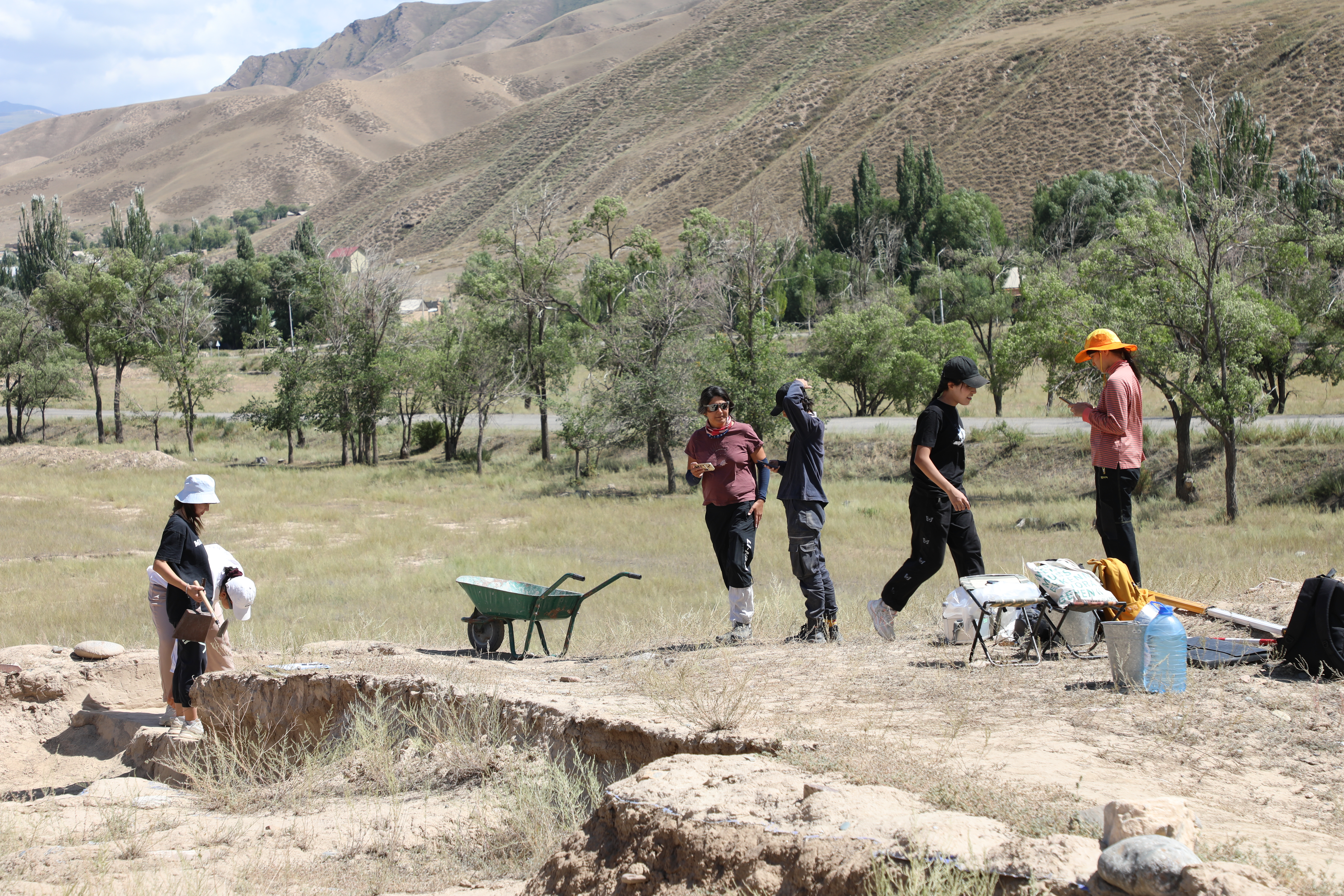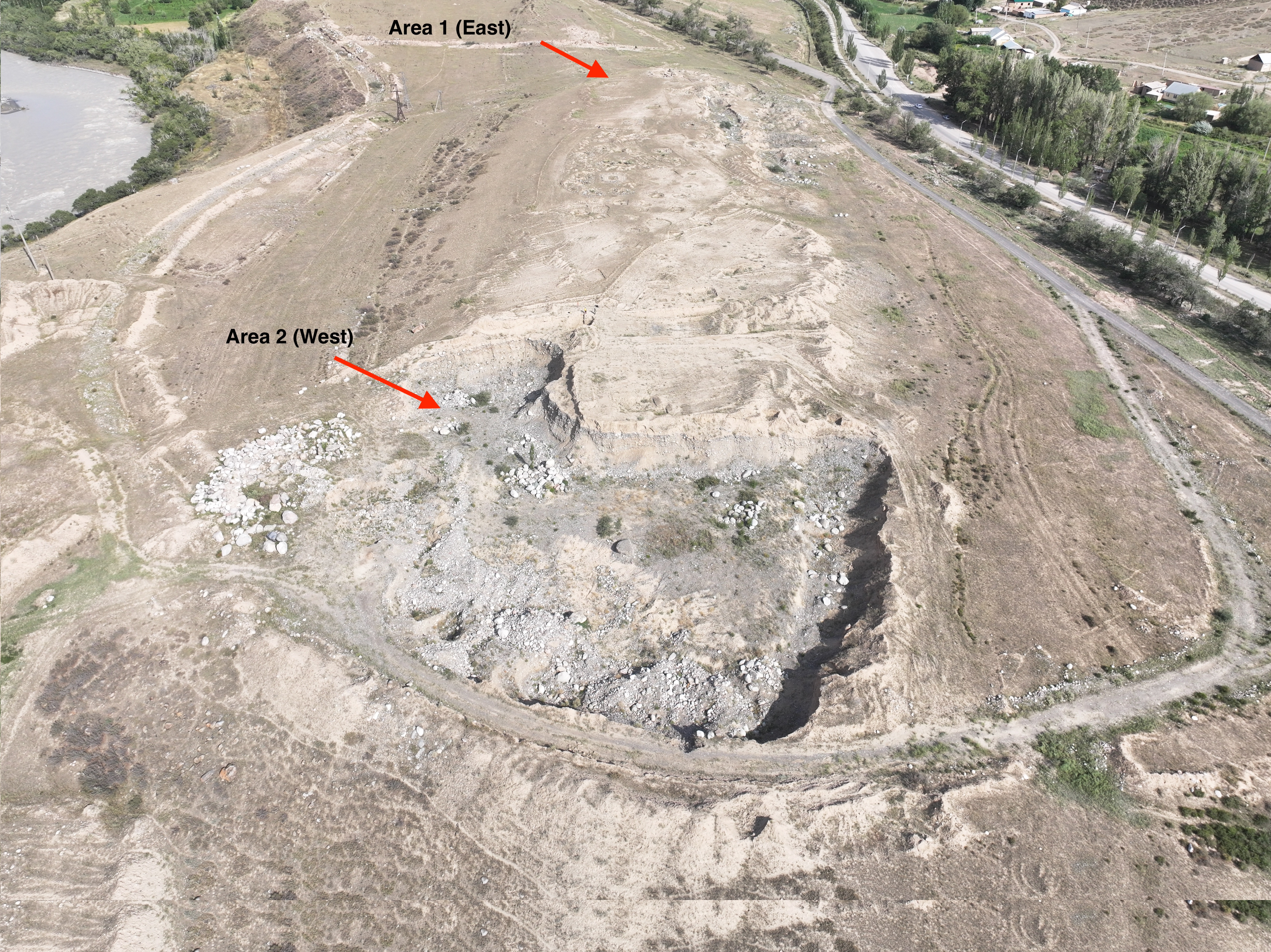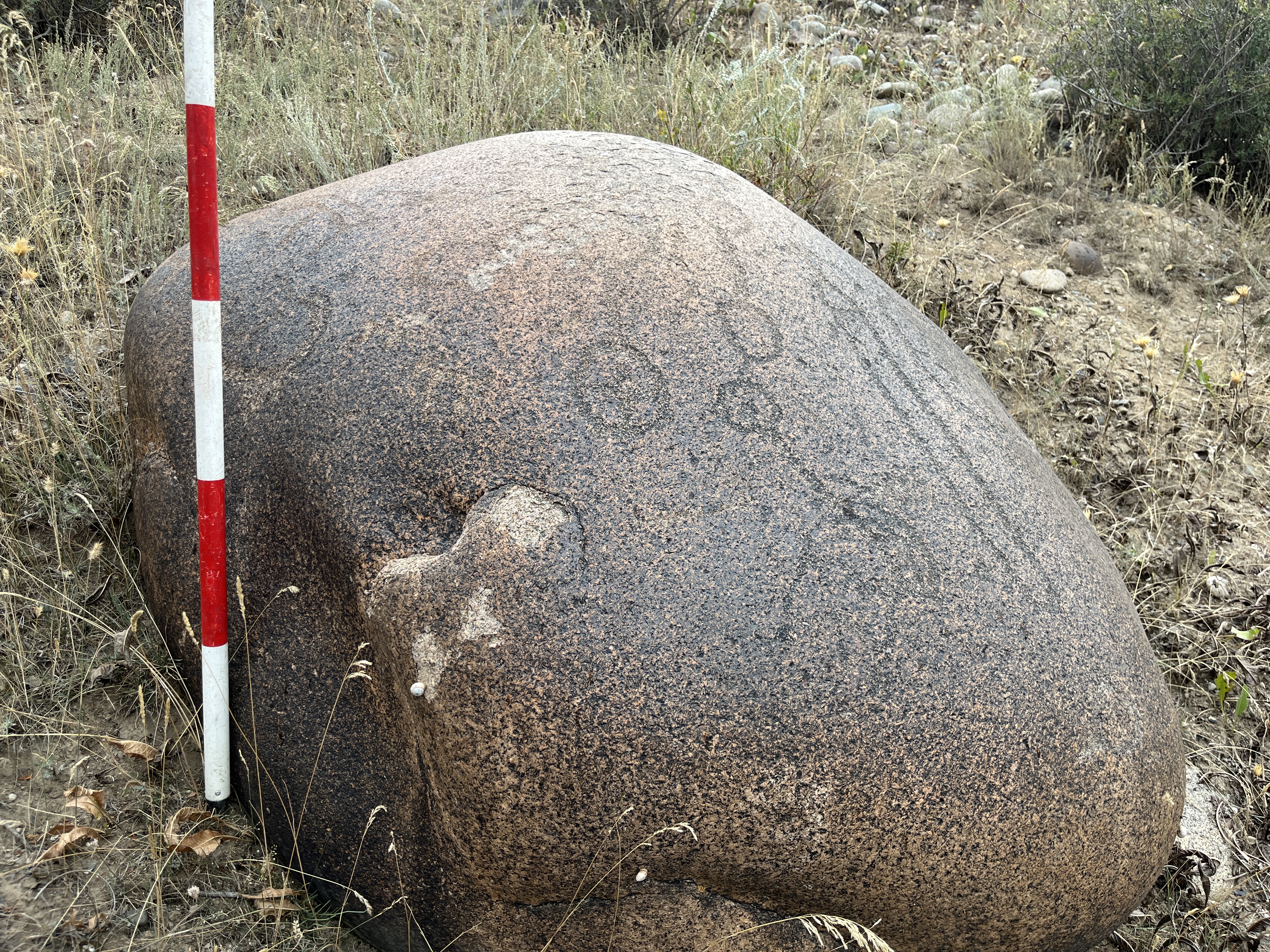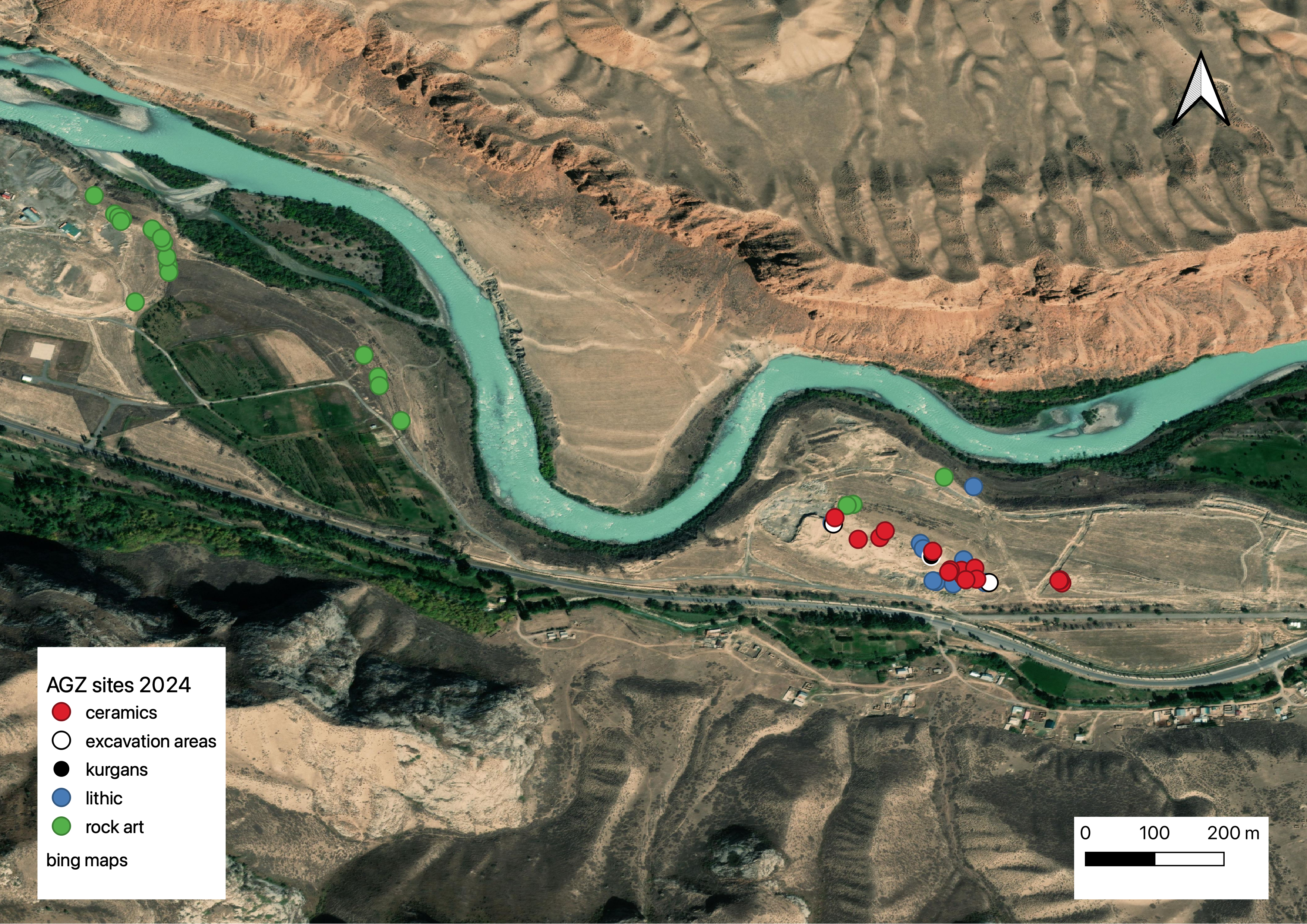
UCA's Archaeological Excavations Reveal Naryn’s Ancient Past
UCA’s Cultural Heritage and Humanities Unit has made significant archaeological discoveries, shedding light on the ancient history of the Naryn region. As part of UCA’s ongoing Naryn Archaeological Project, researchers have unearthed important evidence of human activity dating back to the Mesolithic period, around 13,000 to 14,000 years ago, indicating the presence of hunter-gatherer communities.
Among the discoveries was a round mud structure estimated to be 4,000 to 5,000 years old, further highlighting the area's long history of human settlement. These findings underscore the archaeological and cultural significance of the region, offering valuable insights into the lives of its early inhabitants.
In addition, the team documented a nearby rock art complex, mapping 21 distinct rock engravings. Located on the high banks of a river, these petroglyphs span two important periods—the Bronze Age and the Middle Ages—illustrating the artistic and cultural evolution of the region's early societies.

















